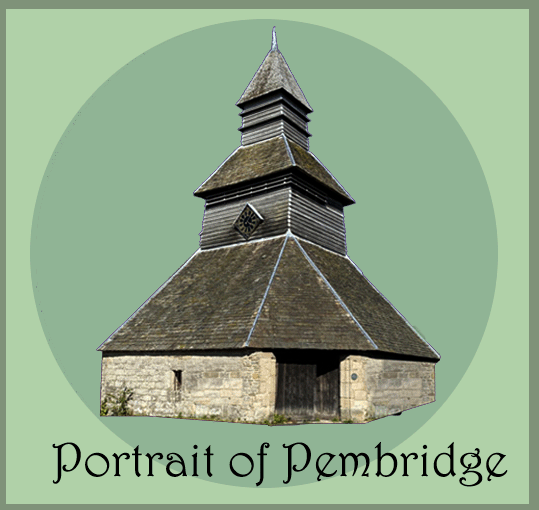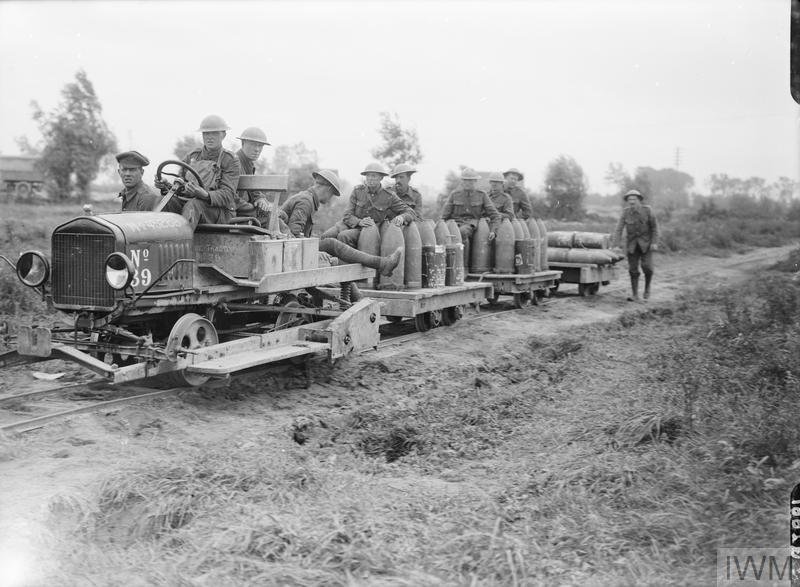James Herbert Jones, Lance Corporal, 6th Battalion King’s Shropshire Light Infantry
James Jones, the son of Herbert and Ophelia Jones, was born in 1891 in Norton, Radnorshire.
In the 1901 census, he was residing with his parents in a five-room house in Marston where his father was a “shepherd on farm”.
By 1911, James Jones was living at 17 Market Street, Knighton, working as a grocer’s assistant for a Mr. Edwin Stephens who was the proprietor of the business at that same address.
When war broke out, James Jones enlisted in the 6th Battalion King’s Shropshire Light Infantry.
“The British Secretary for War, Kitchener, announced on 6 August 1914 that the army was to recruit 500,000 men. The decision was made not to conscript men, which at that time was not politically acceptable, but to ask for volunteers. The volunteers were to be recruited into new military units and not through the Territorial Force structure which was deemed not capable of handling the numbers involved and in any case was intended for ‘home defence’. Further calls for recruits were made over the following months that led eventually to nearly 2.5 million volunteers. The creation of the 5th (Service) Battalion of the King’s Shropshire Light Infantry (5/KSLI) in August 1914 led to a surplus of recruits that was in excess of the proscribed establishment. The additional recruits were used to form the 6th (Service) Battalion King's Shropshire Light Infantry (6/KSLI) at the Shrewsbury depot.
Above photo: Recruits of the 6/KLSI, 1914 (2)
Many recruits had attested as soldiers alongside their friends and workmates. It became common practice for these “pals” to serve in the same service battalions and companies which in turn became known as ‘pals’ battalions.
6/KSLI became a part of 60th Brigade of 20 (Light) Division and was deployed to the Western Front in July 1915 where it undertook further training and then was posted to periods of trench holding duty.” (2)
James Jones’s first experience of military combat would have been at Loos.
“Battle of Loos - September 1915
The French army under General Joffre intended to conduct a breakthrough offensive in Champagne and Artois regions which would also assist the Russian army struggling on the Eastern Front. The British, initially reluctant, were persuaded to attack alongside the French and capture the mining area around the town of Loos. The British army suffering from a severe shortage of artillery and shells would compensate by the release of clouds of poison gas.
Above photo: Gas attack on the Hohenzollern Redoubt at Loos, October 1915 (NAM)
This was to be the first-time poison gas was used by the British Army. 6/KSLI was to support the attack of 12th King’s Royal Rifle Corps(12/KRRC) with A and D companies. On the 23rd and 24th September, 1915, prior to the assault, 6/KSLI dug a sap into no-mans-land in order to facilitate the safer passages of troops during the attack.
Above photo: British Infantry advancing into gas, Loos, 25th September, 1915 (Wikimedia)
On 25th September during the actual attack, A and D companies entered the sap and on reaching the now captured German front line extended it to form a new defensible position. Unfortunately, the 12/KRRC were forced to retreat with severe casualties requiring the 6/KSLI companies to take part in the defence against the German counter-attack. At 2pm 6/KSLI were back at their starting point having suffered 63 casualties.” (3)
The Battle of Mount Sorrel - June 1916
“The German Army anticipating the impending Anglo-French offensive on the Somme, but being short of manpower, planned a spoiling offensive to capture the remaining Allied high ground on the Ypres Salient at Mount Sorrel.
Above photo: Destroyed dugouts and shelters; before the war, most of the terrain was wooded (Wikipedia)
On 25 May 1916, 6/KSLI occupied trenches at Railway Wood near Mount Sorrel. On the right flank was the Canadian Corps. German artillery bombarded their positions from 26 May with increasing intensity over the following days including poison gas shells until on 2 June the German infantry attacked. Hill 62 held by the Canadians was lost but later recaptured. 6 KSLI held their positions killing many of the German Infantry.” (4)
Battle of Guillemont - September 1916
“By September, the small village of Guillemont or rather what remained of it, was a German fortification on the Somme. Former village houses were piles of rubble interspersed with many shell craters.
Above photo: High Street, Guillemont in 1916 (Wikipedia)
The German trenches had largely been destroyed by artillery fire and consisted of linked shell holes and fortified cellars. Tunnels had been dug under the village to a depth of over ten metres. To the north was the fortified remains of Waterlot farm, a former sugar beet factory. 6/KSLI along with the rest of 6th Brigade had been withdrawn into reserve prior to the assault on Guillemont on 3rd September due to it being seriously reduced in numbers.
Above photo: Battle of Guillemont 3-6 September 1916 - British infantry waiting their turn to advance, a tank moving in distance (IWM)
When the attack on Guillemont was made by 20th Division, 6th Brigade was brought back into line to replace the 47th Brigade on 4th September 1916, because 7 Division had been driven back to their own starting trenches. 6/KSLI fought a series of actions to secure the area between 4 and 7 September and again between 16 and 17 September, resulting in 104 “casualties.” (5)
Above photo: German dead in a trench and machine gun post, Guillemont during the Battle of the Somme, September 1916 (Wikipedia)
Battle of Languemark, 1917 – the battle in which Henry Jones was killed.
“The Battle of Langemarck was the third major attack of the Third Battle of Ypres – later known as Passchendaele.
The weather since the beginning of August had been atrocious, with only a handful of rainless days, which delayed the start of the battle by 24 hours.”
At 4.45am on 16 August, elements of eight British divisions attacked the German positions stretching from the Ypres-Menin road to north of the village of Langemarck, while the French First Army attacked north of the village.” (6)
“The objective was an advance of 1500 yards to the limit of the range of the Royal Artillery guns thereby ensuring maximum support to the infantry in this ‘Bite and Hold’ operation. The operation would result in the capture of the village of Langemarke. The German defences were trenches, machine gun posts, belts of barbed wire, concrete pill boxes and blockhouses and other fortified positions in depth, supported by infantry and artillery. The British Army answer was an overwhelming artillery bombardment including the use of a ‘creeping’ barrage moving forward at a rate of 98 yards in four minutes, which the infantry would follow closely to, enabling the suppression of enemy firepower. (7)
Above photo: Battle of Langemarck. Shell bursting in the ruins of Boezinge Station. The remains of a train can be seen in the distance. In the foreground, a smashed up trench in the revetting of which railway sleepers were used, 17 August 1917 (IWM)
The use of tanks was discarded due to the completely broken and flooded ground around the River Steenbeek. 6/KSLI were to 'leapfrog’ the initial advance of the Oxford and Buckinghamshire Light Infantry to advance on the final objective along a narrow 250 yard frontage. At 4.45am on 16 August after enduring heavy German artillery fire at their start position in the open, 6/KSLI advanced in small columns. Moving forward in single file avoiding the deep pools of mud and water 6KSLI captured 49 prisoners and killed many more. ‘Alouette’, a second concrete defensive position was captured and made a headquarters. Under intense German machine gun fire 6/KSLI captured the final objective including Langemarke by 7.45am. Numerous enemy counter-attacks were defeated. 6/KSLI suffered 196 casualties including five who drowned in the mud.” (8)
“Mud, intact German pillboxes, artillery fire and determined counterattacks meant that the attacking British troops could only make limited gains.
In the south of the battlefield British troops could only advance a matter of yards or were forced back to their start lines, while in the north the only notable success by British troops was the capture of ruins of Langemarck village, from which the battle gets its name.” (9)
Above photo: The Royal Garrison Artillery at Elverdinghe, taking up shells by motor-driven light railway during the Battle of Langemarck, 19 August 1917 - photo taken on the day that James Jones was killed at Elverdinghe, Langemarck (IWM)
He is buried at Canada Cemetery.
Above photo: James Jones’s headstone (10)
Above photo: Canada Farm Cemetery (CWGC)
Canada Farm Cemetery took its name from a farmhouse used as a dressing station during the 1917 Allied offensive on this front. Most of the burials are of men who died at the dressing station between June and October 1917. There are now 907 First World War burials in the cemetery”. (CWGC)
Despite its name only 11 Canadian soldiers are buried there.
According to the Commonwealth War Graves Commission Index of Canada Farm Cemetery, James Jones’s parents, Herbert and Ophelia, were living at 26 Church Street, Kington when this index was created which would have been in the early 1920s.
In the 1939 England and Wales register, Herbert and Ophelia Jones were still living in Church Street. Herbert, aged 76, was now a “private gardener”. His wife was 73. Alongside them in their Church Street residence was a nineteen-year-old man called Vaughan Jones who is listed under occupation as ACL Airforce and Herbert Jones and Ophelia Jones are described as “inferred father and mother” to Vaughan Jones but this is not likely, given their age, unless they had chosen to adopt.
The inscription on James Jones’s headstone - “‘MY ONLY CHILD GOD ACCEPTETH HIS WORK” - might make the above supposition credible.
It is not known when Herbert Jones died but Ophelia Jones lived to the age of 95, dying in 1958.
Rory MacColl
Sources
1/ https://www.soldiersofshropshire.co.uk/wp-content/uploads/2022/06/6%EF%80%A2KLSI-1914-1918.pdf
2/ https://www.soldiersofshropshire.co.uk/wp-content/uploads/2022/06/6%EF%80%A2KLSI-1914-1918.pdf
3/ https://www.soldiersofshropshire.co.uk/wp-content/uploads/2022/06/6%EF%80%A2KLSI-1914-1918.pdf
4/ https://www.soldiersofshropshire.co.uk/wp-content/uploads/2022/06/6%EF%80%A2KLSI-1914-1918.pdf
5/ https://www.soldiersofshropshire.co.uk/wp-content/uploads/2022/06/6%EF%80%A2KLSI-1914-1918.pdf
6/ https://www.cwgc.org/our-work/news/7-facts-about-the-battle-of-langemarck/
7/ https://www.soldiersofshropshire.co.uk/wp-content/uploads/2022/06/6%EF%80%A2KLSI-1914-1918.pdf
8/ https://www.soldiersofshropshire.co.uk/wp-content/uploads/2022/06/6%EF%80%A2KLSI-1914-1918.pdf
9/ https://www.cwgc.org/our-work/news/7-facts-about-the-battle-of-langemarck/
10/ https://www.findagrave.com/memorial/11154695/james-herbert-jones#view-photo=2290324












